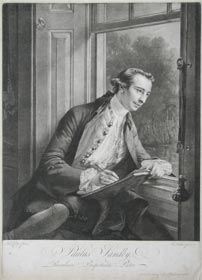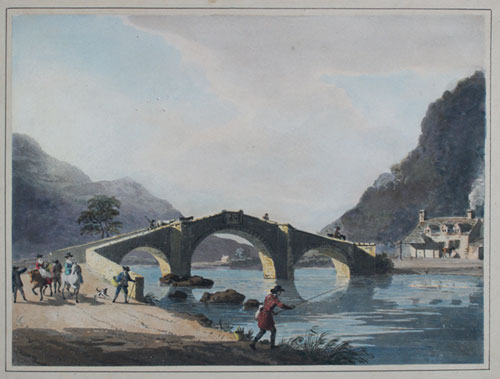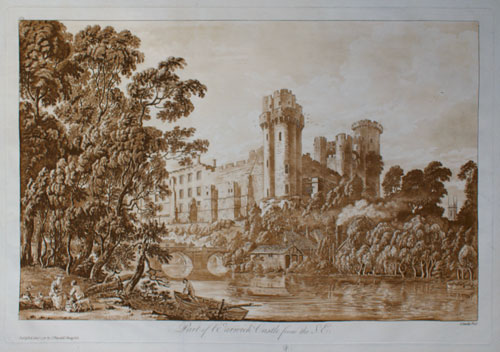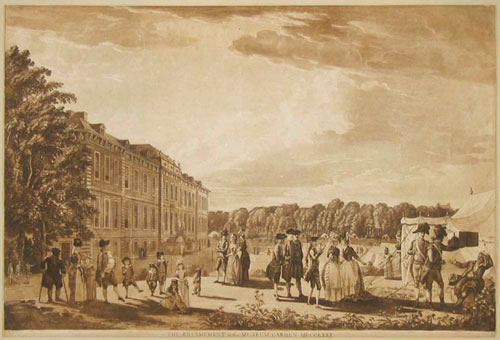 |
|
Paul Sandby was born in Nottingham in 1731, the son of Thomas Sandby, a textile worker. At the age of 17 he moved to London where his elder brother Thomas (1723-1798), an Ordnance Draughtsman for the Duke of Cumberland, helped him obtain the post of Military Drawing Officer to the Royal Ordnance in the Tower of London. In the aftermath of the 1745 Jacobite Rebellion Paul worked as the chief draughtsman of the Ordnance Survey of Scotland (1747-1752). Touring the Highlands preparing designs for new bridges and fortifications, Paul also worked on watercolour landscapes and sketches of Scottish life, as well as producing his first etchings. In 1752 Paul Sandby left the Ordnance: Thomas had been appointed deputy ranger of Windsor Great Park and Paul joined him there. Thomas, an architect as well as a draughtsman, enlarged Cumberland Lodge and made extensive alterations of the park, including the formation of Virginia Water, aided by Paul. In 1754 Thomas drew eight drawings of the new lake and Paul was one of the engravers who transfered the set to print. |
Fun upon fun, or the first and the second part of Miss Kitty Fishers Merry thought. A ballad vendor, one of the Twelve London Cries done from the Life, Part 1st, 1760 |
In 1765 Ryland and Bryer published a collection of one hundred of Paul’s etchings, which included most of Sandby’s output of etchings to that date. In 1768 the brothers were both among the twenty-eight of the original members of the Royal Academy. (William Hogarth's hostile opposition to the scheme had led Paul to engrave and publish a number of scurrilous caricatures attacking the much more famous painter; it was only after Hogarth's death in 1764 that the Royal Academy could be founded). The same year Paul was appointed chief drawing master to the Royal Military Academy at Woolwich, a post he held for over thirty years. |
The Entrance to Chepstow Castle |
Sandby started visiting Wales in the early 1770s, and in 1773 joined Sir Joseph Banks on a tour of southern Wales (only two years after Banks had circumnavigated the world as Botanist on Cook's First Voyage), which resulted in a ground-breaking book of topographical prints, 'XII Views in Aquatinta... From drawings taken on the spot in South Wales', dedicated to Banks. The XII Views were a huge success, prompting three more sets of twelve to be published. |
The Bridge at Llanrwst in Denbighshire |
Sandby was unusual as a painter who could engrave his own work, especially on a commercially-viable level. He was neither the inventor of aquatint nor the first to use the technique in England, having paid Peter Perez Burdett to teach him the process in in December 1773, but he improved it with the introduction of spirit ground. By suspending the ground in alcohol it could be painted onto the printing plate rather than shaking dusty ground over it. He named the process 'aquatinta' for his intended use of reproducing watercolours. His innovation simplified the process of aquatint, so enabling the golden age of British colour-plate topographical books. |
Part of Warwick Castle from the S.E. |
| On his death in London in 1809 an obituary described Sandby as 'the father of modern landscape painting in watercolours'. Today he is not as well known as he should be, having been eclipsed by artists he influenced, for example J.M.W. Turner. However in 2010 the Royal Academy did celebrate the birthday of one of its founders with 'Paul Sandby RA: Picturing Britain, A Bicentenary Exhibition'. |
The Encampment in the Museum Garden, MDCCLXXX |





